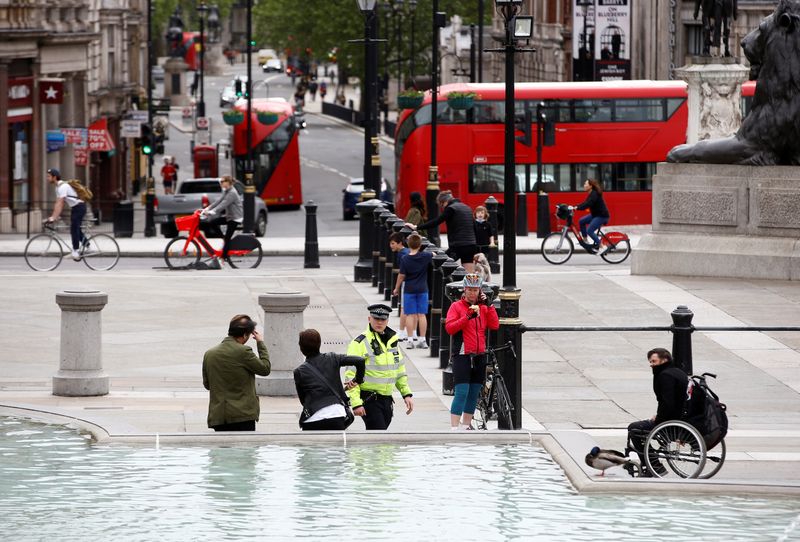LONDON (Reuters) – British Prime Minister Boris Johnson is due this week to present a possible way out of the coronavirus lockdown to get the world’s fifth largest economy back to work without triggering a second spike in cases.
The government is obliged to review the lockdown by May 7 and Johnson has said he would like to set out a roadmap and a menu of options for easing restrictions.
However, Johnson has also outlined five tests that must be met before the restrictions can be lifted in the country with the second-highest death toll in Europe after Italy.
TEST ONE
“The National Health Service (NHS) has sufficient capacity to provide critical care and specialist treatment right across the United Kingdom.”
Government scientists say the number of infections is coming down. Hospital admissions are declining too, as is the number of patients in critical care. In London, there is clear decline in the number of people with COVID-19 in hospital but the decline is less marked in other regions such as Scotland, the North East of England and the East of England.
TEST TWO
“A sustained and consistent fall in daily deaths from coronavirus.”
The worst days for deaths were April 21 when 1,172 deaths were reported and April 10 with 1,152. Since April 21, the daily toll went as low as 338 on April 27 and as high as 1,005 on April 24. Deaths rose by 315 to 28,446 on May 2.
Government scientists say that while the daily death tolls show a downward trend they expect them to plateau for a while.
TEST THREE
“Reliable data to show that the rate of infection is decreasing to manageable levels across the board.”
Johnson has said keeping the reproduction number – R0 or “R nought” – down is absolutely vital. That’s the average number of people that one person with the coronavirus infects. Scientists say the R number is in a range of 0.6 to 0.9 whereas it was 3.0 in March. That means each infected person is now, on average, infecting less than one other person.
TEST FOUR
“Operational challenges including testing and personal protective equipment (PPE) are in hand with supply able to meet future demand.”
Health Secretary Matt Hancock said on Friday that the United Kingdom had hit its target of carrying out 100,000 COVID-19 tests a day. He said 122,347 tests were conducted in the 24 hours to 0800 GMT on Friday. However, figures on Sunday showed only 76,496 tests had been carried out the previous day.
There have been problems, however, in getting PPE to some front line health workers and care homes.
TEST FIVE
“Confident that any adjustments to the current measures will not risk a second peak of infections that overwhelms the NHS.”
This is the hardest test to fathom and the most dangerous for Johnson. Scientists will be watching the R number very closely to ensure it does not rise above 1.0. There is no specific treatment for the new coronavirus nor is there a vaccine as yet.
(Reporting by Guy Faulconbridge; Editing by David Clarke and Ed Osmond)



















